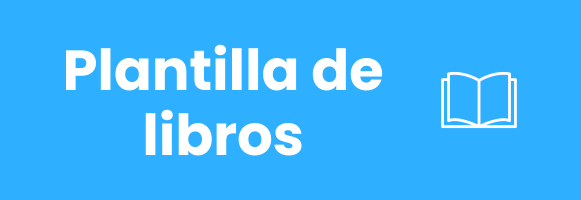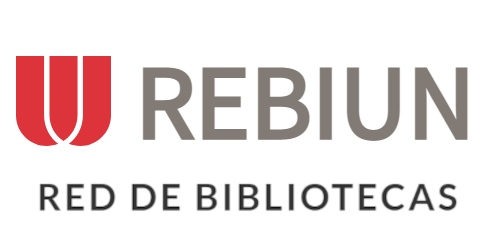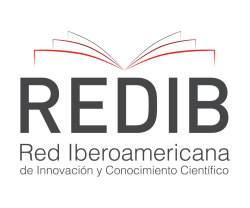Estudios clínicos de Rosmarinus Officinalis L. (Romero): Una Revisión Bibliográfica
Resumen
Rosmarinus officinalis L. (romero) es una planta comestible, medicinal y ornamental, utilizada para el tratamiento de la hiperglucemia, hiperlipemia, trastornos cognitivos, estrés oxidativo, entre otros. Los efectos medicinales del romero se asocian a sus metabolitos secundarios, siendo el ácido carnósico, ácido rosmarínico y carnosol los principales ingredientes bioactivos. La presente investigación engloba una revisión en las plataformas Pubmed y ScienceDirect, con el objetivo de identificar todos los estudios en humanos donde se administró romero, para así determinar las diversas aplicaciones terapéuticas, las dosis empleadas y los tipos de extractos utilizados en la práctica clínica. Los resultados evidencian su actividad a nivel celular y en afecciones bucodentales, dermatológicas, metabólicas, respiratorias, y en trastornos del sistema nervioso central, donde se ha evaluado como aceite esencial, extracto acuoso, alcohólico o sólo hojas pulverizadas de romero, ya sea solo o en conjunto con otras plantas, en cápsulas de 250 mg hasta 10 g, o en té en dosis de 250 mL hasta 1L. Los numerosos estudios respaldan el potencial terapéutico del romero y justifican su continuo estudio en el ámbito de la medicina basada en la evidencia.
Descargas
Citas
& Mancini-Filho, J. (2013). Phenolic compounds from Rosemary (Rosmarinus officinalis L.) attenuate oxidative stress and reduce blood cholesterol concentrations in diet-induced hypercholesterolemic rats. Nutrition & metabolism,10(1), 19. https://doi.org/10.1186/1743-7075-10-19.
Akbari, S., Sohouli, M. H., Ebrahimzadeh, S., Ghanaei, F. M., Hosseini, A. F., & Aryaeian, N. (2022). Effect of rosemary leaf powder with weight loss diet on lipid profile, glycemic status, and liver enzymes in patients with nonalcoholic fatty liver disease: A randomized, double-blind clinical trial. Phytotherapy research: PTR, 36(5), 2186–2196. https://doi.org/10.1002/ptr.7446.
Al-Megrin, W. A., AlSadhan, N. A., Metwally, D. M., Al-Talhi, R. A., El-Khadragy, M. F., & Abdel-Hafez, L. J. M. (2020). Potential antiviral agents of Rosmarinus officinalis extract against herpes viruses 1 and 2. Bioscience reports, 40(6), BSR20200992. https://doi.org/10.1042/BSR20200992.
Alrashdi, J., Albasher, G., Alanazi, M. M., Al-Qahtani, W. S., Alanezi, A. A., & Alasmari, F. (2023). Effects of Rosmarinus officinalis L. Extract on Neurobehavioral and Neurobiological Changes in Male Rats with Pentylenetetrazol-Induced Epilepsy. Toxics, 11(10), 826. https://doi.org/10.3390/toxics11100826.
Azad, M. F., Schwiertz, A., & Jentsch, H. F. (2016). Adjunctive use of essential oils following scaling and root planing -a randomized clinical trial. BMC complementary and alternative medicine, 16,171. https://doi.org/10.1186/s12906-016-1117-x.
Azizi, S., Mohamadi, N., Sharififar, F., Dehghannoudeh, G., Jahanbakhsh, F., & Dabaghzadeh, F. (2022). Rosemary as an adjunctive treatment in patients with major depressive disorder: A randomized, double-blind, placebo-controlled trial. Complementary therapies in clinical practice, 49, 101685. https://doi.org/10.1016/j.ctcp.2022.101685.
Bellumori, M., Innocenti, M., Congiu, F., Cencetti, G., Raio, A., Menicucci, F., Mulinacci, N., & Michelozzi, M. (2021). Within-Plant Variation in Rosmarinus officinalis L. Terpenes and Phenols and Their Antimicrobial Activity against the Rosemary Phytopathogens Alternaria alternata and Pseudomonas viridiflava. Molecules (Basel,Switzerland), 26(11), 3425. https://doi.org/10.3390/molecules26113425.
Ben-Arye, E., Dudai, N., Eini, A., Torem, M., Schiff, E., & Rakover, Y. (2011). Treatment of upper respiratory tract infections in primary care: a randomized study using aromatic herbs. Evidence-based complementary and alternative medicine: eCAM, 2011, 690346. https://doi.org/10.1155/2011/690346.
Dabaghzadeh, F., Mehrabani, M., Abdollahi, H., & Karami-Mohajeri, S. (2021). Antioxidant and anticholinergic effects of rosemary (Salvia rosmarinus) extract: A double-blind randomized controlled trial. Advances in Integrative Medicine. doi: 10.1016/j.aimed.2021.03.002.
de Oliveira, J. R., Camargo, S. E. A., & de Oliveira, L. D. (2019). Rosmarinus officinalis L. (rosemary) as therapeutic and prophylactic agent. Journal of biomedical science, 26(1), 5. https://doi.org/10.1186/s12929-019-0499-8.
Dehghan, N., Azizzadeh Forouzi, M., Etminan, A., Roy, C., & Dehghan, M. (2022). The effects of lavender, rosemary and orange essential oils on memory problems and medication adherence among patients undergoing hemodialysis: A parallel randomized controlled trial. Explore (New York, N.Y.), 18(5), 559–566. https://doi.org/10.1016/j.explore.2021.10.004.
Fernández, L. F., Palomino, O. M., & Frutos, G. (2014). Effectiveness of Rosmarinus officinalis essential oil as antihypotensive agent in primary hypotensive patients and its influence on health-related quality of life. Journal of ethnopharmacology, 151(1), 509–516. https://doi.org/10.1016/j.jep.2013.11.006.
Fidan, H., Stankov, S., Ivanova, T., Stoyanova, A., Damyanova, S. & Ercisli, S. (2019). Characterization of aromatic compounds and antimicrobial properties of four spice essential oils from family Lamiaceae. Ukrainian Food Journal, 8, 227-238. DOI: 10.24263/2304-974X2019-8-2-3.
Flores-Villa, E., Sáenz-Galindo, A., Castañeda-Facio, A. O., & Narro-Céspedes, R.I. (2020). Romero (Rosmarinus officinalis L.): su origen, importancia y generalidades de sus metabolitos secundarios. TIP. Revista especializada en ciencias químico-biológicas, 23, e20200266. Epub 05 de marzo de 2021. https://doi.org/10.22201/fesz.23958723e.2020.0.266.
Fuchs, S. M., Schliemann-Willers, S., Fischer, T. W., & Elsner, P. (2005). Protective effects of different marigold (Calendula officinalis L.) and rosemary cream preparations against sodium-lauryl-sulfate-induced irritant contact dermatitis. Skin pharmacology and physiology, 18(4), 195–200. https://doi.org/10.1159/000085865.
Ghasemzadeh, M. R., Amin, B., Mehri, S., Mirnajafi-Zadeh, S. J., & Hosseinzadeh, H. (2016). Effect of alcoholic extract of aerial parts of Rosmarinus officinalis L. on pain, inflammation and apoptosis induced by chronic constriction injury (CCI) model of neuropathic pain in rats. Journal of ethnopharmacology, 194, 117–130. https://doi.org/10.1016/j.jep.2016.08.043.
Gómez de Cedrón, M., Laparra, J. M., Loria-Kohen, V., Molina, S., Moreno-Rubio, J., Montoya, J. J., Torres, C., Casado, E., Reglero, G., & Ramírez de Molina, A. (2019). Tolerability and Safety of a Nutritional Supplement with Potential as Adjuvant in Colorectal Cancer Therapy: A Randomized Trial in Healthy Volunteers. Nutrients, 11(9), 2001. https://doi.org/10.3390/nu11092001.
Gonçalves, C., Fernandes, D., Silva, I., & Mateus, V. (2022). Potential Anti- Inflammatory Effect of Rosmarinus officinalis in Preclinical In Vivo Models of Inflammation. Molecules (Basel, Switzerland), 27(3), 609. https://doi.org/10.3390/molecules27030609.
Hassanen, N. H. M., Fahmi, A., Shams-Eldin, E., & Abdur-Rahman, M. (2020). Protective effect of rosemary (Rosmarinus officinalis) against diethylnitrosamine-induced renal injury in rats. Biomarkers: biochemical indicators of exposure, response, and susceptibility to chemicals, 25(3), 281–289. https://doi.org/10.1080/1354750X.2020.1737734.
Labban, L. (2014). The Effects of Rosemary (Rosmarinus officinalis) Leaves Powder on Glucose Level, Lipid Profile and Lipid Perodoxation. International Journal of Clinical Medicine. 5. 297-304. DOI: 10.4236/ijcm.2014.56044.
Lazalde-Ramos, B.P., Zamora-Perez, A.L., Ortega-Guerrero, A.I., Quintero- Fraire, S.Z., Palacios-Lara, O., Quirarte-Báez, S. M., Galaviz-Hernández, C., Sosa- Macías, M., Ortiz-García, Y. M., & Morales-Velazquez, G. (2020). Genomic Instability Decreases in HIV Patient by Complementary Therapy with Rosmarinus officinalis Extracts. Journal of medicinal food, 23(10), 1070–1076. https://doi.org/10.1089/jmf.2019.0199.
Li, T., Wang, W., Guo, Q., Li, J., Tang, T., Wang, Y., Liu, D., Yang, K., Li, J., Deng, K.,Wang, F., Li, H., Wu, Z., Guo, J., Guo, D., Shi, Y., Zou, J., Sun, J., Zhang, X., & Yang, M. (2024).
Rosemary (Rosmarinus officinalis L.) hydrosol based on serotonergic synapse for insomnia. Journal of ethnopharmacology, 318(Pt B), 116984. https://doi.org/10.1016/j.jep.2023.116984 .
Madsen, S., Bak, S. Y., Yde, C. C., Jensen, H. M., Knudsen, T. A., Bæch-Laursen, C., Holst, J. J., Laustsen, C., & Hedemann, M. S. (2023). Unravelling Effects of Rosemary (Rosmarinus officinalis L.) Extract on Hepatic Fat Accumulation and Plasma Lipid Profile in Rats Fed a High-Fat Western-Style Diet. Metabolites, 13(9), 974. https://doi.org/10.3390/metabo13090974.
Mahyari, S., Mahyari, B., Emami, S. A., Malaekeh-Nikouei, B., Jahanbakhsh, S. P., Sahebkar, A., & Mohammadpour, A. H. (2016). Evaluation of the efficacy of a polyherbal mouthwash containing Zingiber officinale, Rosmarinus officinalis and Calendula officinalis extracts in patients with gingivitis: A randomized double- blind placebo-controlled trial. Complementary therapies in clinical practice, 22, 93–98. https://doi.org/10.1016/j.ctcp.2015.12.001
Meccatti, V. M., Figueiredo-Godoi, L. M. A., Pereira, T. C., de Lima, P. M. N., Abu Hasna, A., Senna, L. B., Marcucci, M. C., Junqueira, J. C., & de Oliveira, L. D. (2022). The biocompatibility and antifungal effect of Rosmarinus officinalis against Candida albicans in Galleria mellonella model. Scientific reports, 12(1), 15611. https://doi.org/10.1038/s41598-022-19425-9.
Mirsadraee, M., Tavakoli, A., Ghorani, V., & Ghaffari, S. (2018). Effects of Rosmarinus officinalis and Platanus orientalis extracts on asthmatic subjects resistant to routine treatments. Avicenna journal of phytomedicine, 8(5), 399–407.
Momeni Safarabadi, A., Gholami, M., Kordestani-Moghadam, P., Ghaderi, R., & Birjandi, M. (2024). The effect of rosemary hydroalcoholic extract on cognitive function and activities of daily living of patients with chronic obstructive pulmonary disease (COPD): A clinical trial. Explore (New York, N.Y.), 20(3), 362–370. https://doi.org/10.1016/j.explore.2023.09.008.
Moore, J., Yousef, M., & Tsiani, E. (2016). Anticancer Effects of Rosemary (Rosmarinus officinalis L.) Extract and Rosemary Extract Polyphenols. Nutrients, 8(11), 731. https://doi.org/10.3390/nu8110731.
Moss, M., Smith, E., Milner, M., & McCready, J. (2018). Acute ingestion of rosemary water: Evidence of cognitive and cerebrovascular effects in healthy adults. Journal of psychopharmacology (Oxford, England), 32(12), 1319–1329. https://doi.org/10.1177/0269881118798339.
Murata, K., Noguchi, K., Kondo, M., Onishi, M., Watanabe, N., Okamura, K., & Matsuda, H. (2013). Promotion of hair growth by Rosmarinus officinalis leaf extract. Phytotherapy research: PTR, 27(2), 212–217. https://doi.org/10.1002/ptr.4712.
Nematolahi, P., Mehrabani, M., Karami-Mohajeri, S., & Dabaghzadeh, F. (2018). Effects of Rosmarinus officinalis L. on memory performance, anxiety, depression, and sleep quality in university students: A randomized clinical trial. Complementary therapies in clinical practice, 30, 24–28. https://doi.org/10.1016/j.ctcp.2017.11.004.
Nolkemper, S., Reichling, J., Stintzing, F. C., Carle, R., & Schnitzler, P. (2006). Antiviral effect of aqueous extracts from species of the Lamiaceae family against Herpes simplex virus type 1 and type 2 in vitro. Planta medica, 72(15), 1378–1382. https://doi.org/10.1055/s-2006-951719
Panahi, Y., Taghizadeh, M., Marzony, E. T., & Sahebkar, A. (2015). Rosemary oil vs minoxidil 2% for the treatment of androgenetic alopecia: a randomized comparative trial. Skinmed, 13(1), 15–21.
Park, J., Rho, S. J., & Kim, Y. R. (2019). Enhancing antioxidant and antimicrobial activity of carnosic acid in rosemary (Rosmarinus officinalis L.) extract by complexation with cyclic glucans. Food chemistry, 299, 125119. https://doi.org/10.1016/j.foodchem.2019.125119.
Pengelly, A., Snow, J., Mills, S. Y., Scholey, A., Wesnes, K., & Butler, L. R. (2012). Short-term study on the effects of rosemary on cognitive function in an elderly population. Journal of medicinal food, 15(1), 10–17. https://doi.org/10.1089/jmf.2011.0005.
Pérez-Piñero, S., Muñoz-Carrillo, J. C., Echepare-Taberna, J., Luque-Rubia, A. J., Millán Rivero, J. E., Muñoz-Cámara, M., Díaz Silvente, M. J., Valero Merlos, E., Ávila- Gandía, V., Caturla, N., Navarro, P., Cabrera, M., & López-Román, F. J. (2024). Dietary supplementation with plant extracts for amelioration of persistent myofascial discomfort in the cervical and back regions: a randomized double- blind controlled study. Frontiers in nutrition, 11, 1403108. https://doi.org/10.3389/fnut.2024.1403108.
Pérez-Sánchez, A., Barrajón-Catalán, E., Caturla, N., Castillo, J., Benavente-García, O., Alcaraz, M., & Micol, V. (2014). Protective effects of citrus and rosemary extracts on UV-induced damage in skin cell model and human volunteers. Journal of photochemistry and photobiology. B, Biology, 136, 12–18. https://doi.org/10.1016/j.jphotobiol.2014.04.007.
Perry, N. S. L., Menzies, R., Hodgson, F., Wedgewood, P., Howes, M. R., Brooker, H. J., Wesnes, K. A., & Perry, E. K. (2018). A randomised double-blind placebo- controlled pilot trial of a combined extract of sage, rosemary and melissa, traditional herbal medicines, on the enhancement of memory in normal healthy subjects, including influence of age. Phytomedicine: international journal of phytotherapy and phytopharmacology, 39, 42–48. https://doi.org/10.1016/j.phymed.2017.08.015.
Quirarte-Báez, S. M., Zamora-Perez, A. L., Reyes-Estrada, C. A., Gutiérrez- Hernández, R., Sosa-Macías, M., Galaviz-Hernández, C., Manríquez, G. G. G., & Lazalde-Ramos, B. P. (2019). A shortened treatment with rosemary tea (Rosmarinus officinalis) instead of glucose in patients with diabetes mellitus type 2 (TSD). Journal of population therapeutics and clinical pharmacology = Journal de la therapeutique des populations et de la pharmacologie clinique, 26(4), e18– e28. https://doi.org/10.15586/jptcp.v26i4.634.
Rasoulian, B., Hajializadeh, Z., Esmaeili-Mahani, S., Rashidipour, M., Fatemi, I., & Kaeidi, A. (2019). Neuroprotective and antinociceptive effects of rosemary (Rosmarinus officinalis L.) extract in rats with painful diabetic neuropathy. The journal of physiological sciences: JPS, 69(1), 57–64. https://doi.org/10.1007/s12576-018-0620-x
Saied, M., Ali, K., & Mosayeb, A. (2023). Rosemary (Rosmarinus officinalis L.) essential oil alleviates testis failure induced by Etoposide in male rats. Tissue & cell, 81, 102016. https://doi.org/10.1016/j.tice.2023.102016.
Sayadi Mank-Halati, M., Rezaei, M., Farzaei, M. H., & Khatony, A. (2024). Comparing the effects of rosemary aromatherapy and music therapy on anxiety levels in patients undergoing general surgery: A randomized controlled clinical trial. Explore (New York, N.Y.), 20(5), 102976. https://doi.org/10.1016/j.explore.2024.01.002
Vagedes, J., Henes, J., Deckers, B., Vagedes, K., Kuderer, S., Helmert, E., & von Schoen-Angerer, T. (2022). Topical Rosmarinus officinalis L. in Systemic Sclerosis- Related Raynaud's Phenomenon: An Open-Label Pilot Study. Topische Anwendung von Rosmarinus officinalis L. bei Raynaud-Phänomen im Zusammenhang mit systemischer Sklerose: Eine unverblindete Pilotstudie. Complementary medicine research, 29(3), 242–248. https://doi.org/10.1159/000522507.
Derechos de autor 2025 Diana Jazmín Soriano Gálvez, Marisol Galván Valencia , Blanca Patricia Lazalde Ramos

Esta obra está bajo licencia internacional Creative Commons Reconocimiento 4.0.











.png)




















.png)
1.png)


